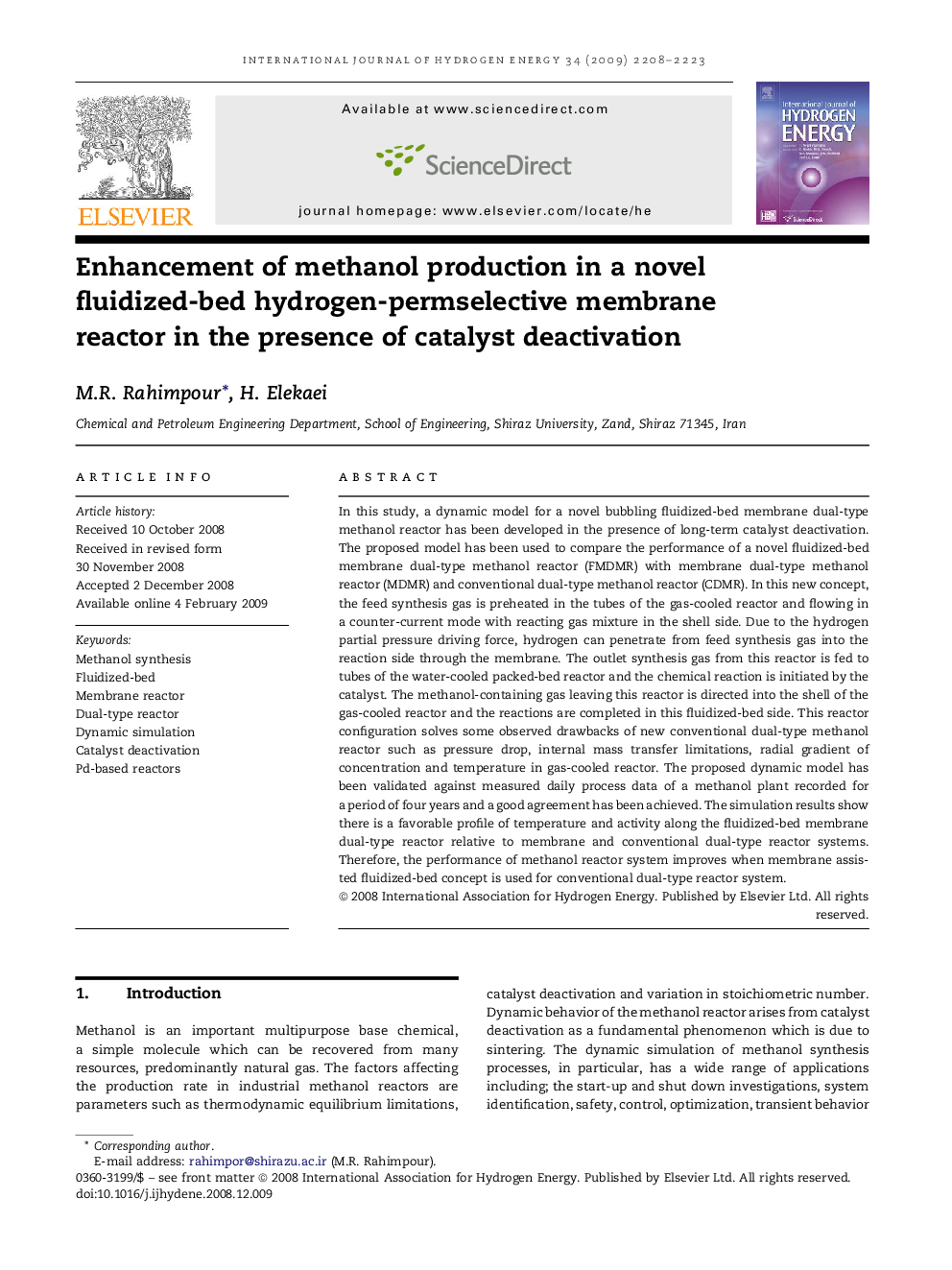| Article ID | Journal | Published Year | Pages | File Type |
|---|---|---|---|---|
| 1283277 | International Journal of Hydrogen Energy | 2009 | 16 Pages |
In this study, a dynamic model for a novel bubbling fluidized-bed membrane dual-type methanol reactor has been developed in the presence of long-term catalyst deactivation. The proposed model has been used to compare the performance of a novel fluidized-bed membrane dual-type methanol reactor (FMDMR) with membrane dual-type methanol reactor (MDMR) and conventional dual-type methanol reactor (CDMR). In this new concept, the feed synthesis gas is preheated in the tubes of the gas-cooled reactor and flowing in a counter-current mode with reacting gas mixture in the shell side. Due to the hydrogen partial pressure driving force, hydrogen can penetrate from feed synthesis gas into the reaction side through the membrane. The outlet synthesis gas from this reactor is fed to tubes of the water-cooled packed-bed reactor and the chemical reaction is initiated by the catalyst. The methanol-containing gas leaving this reactor is directed into the shell of the gas-cooled reactor and the reactions are completed in this fluidized-bed side. This reactor configuration solves some observed drawbacks of new conventional dual-type methanol reactor such as pressure drop, internal mass transfer limitations, radial gradient of concentration and temperature in gas-cooled reactor. The proposed dynamic model has been validated against measured daily process data of a methanol plant recorded for a period of four years and a good agreement has been achieved. The simulation results show there is a favorable profile of temperature and activity along the fluidized-bed membrane dual-type reactor relative to membrane and conventional dual-type reactor systems. Therefore, the performance of methanol reactor system improves when membrane assisted fluidized-bed concept is used for conventional dual-type reactor system.
